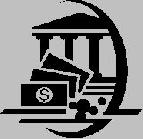
 |
|
| Financial Terms | |
| statement of financial condition |
|
Information about financial, finance, business, accounting, payroll, inventory, investment, money, inventory control, stock trading, financial advisor, tax advisor, credit.
Main Page: inventory control, finance, money, financial, stock trading, investment, business, payroll, |
Definition of statement of financial condition
statement of financial conditionSee balance sheet.
Related Terms:Balance sheetAlso called the statement of financial condition, it is a summary of the assets, liabilities, and accounting equationAn equation that reflects the two-sided nature of a balance sheetA term often used instead of the more formal and correct financial reports and statementsfinancial means having to do with Changes in Financial PositionSources of funds internally provided from operations that alter a company's Conditional sales contractsSimilar to equipment trust certificates except that the lender is either the Convention statementAn annual statement filed by a life insurance company in each state where it does  Corporate financial managementThe application of financial principals within a corporation to create and Corporate financial planningfinancial planning conducted by a firm that encompasses preparation of both Country financial riskThe ability of the national economy to generate enough foreign exchange to meet Dupont system of financial controlHighlights the fact that return on assets (ROA) can be expressed in terms Financial analystsAlso called securities analysts and investment analysts, professionals who analyze Financial assetsClaims on real assets. Financial controlThe management of a firm's costs and expenses in order to control them in relation to Financial distressEvents preceding and including bankruptcy, such as violation of loan contracts. Financial distress costsLegal and administrative costs of liquidation or reorganization. Also includes  Financial engineeringCombining or dividing existing instruments to create new financial products. Financial futureA contract entered into now that provides for the delivery of a specified asset in exchange Financial intermediariesInstitutions that provide the market function of matching borrowers and lenders or Financial leaseLong-term, non-cancelable lease. Financial leverageUse of debt to increase the expected return on equity. financial leverage is measured by Financial leverage clienteleA group of investors who have a preference for investing in firms that adhere to Financial leverage ratiosRelated: capitalization ratios. Financial marketAn organized institutional structure or mechanism for creating and exchanging financial assets. Financial objectivesObjectives of a financial nature that the firm will strive to accomplish during the period Financial planA financial blueprint for the financial future of a firm. Financial planningThe process of evaluating the investing and financing options available to a firm. It Financial pressThat portion of the media devoted to reporting financial news. Financial ratioThe result of dividing one financial statement item by another. Ratios help analysts interpret Financial riskThe risk that the cash flow of an issuer will not be adequate to meet its financial obligations. Income statement (statement of operations)A statement showing the revenues, expenses, and income (the London International Financial Futures Exchange (LIFFE)A London exchange where Eurodollar futures Long-term financial planfinancial plan covering two or more years of future operations. London International Financial Futures Exchange (LIFFE)London exchange where Eurodollar futures as well as futures-style options are traded. Non-financial servicesInclude such things as freight, insurance, passenger services, and travel. Notes to the financial statementsA detailed set of notes immediately following the financial statements in Official statementA statement published by an issuer of a new municipal security describing itself and the issue Perfectly competitive financial marketsMarkets in which no trader has the power to change the price of Pro forma financial statementsfinancial statements as adjusted to reflect a projected or planned transaction. Pro forma statementA financial statement showing the forecast or projected operating results and balance Registration statementA legal document that is filed with the SEC to register securities for public offering. Short-term financial planA financial plan that covers the coming fiscal year. Society for Worldwide Interbank Financial Telecommunications (SWIFT)A dedicated computer network to support funds transfer messages internationally between over 900 member banks worldwide. Statement billingBilling method in which the sales for a period such as a month (for which a customer also Statement of cash flowsA financial statement showing a firm's cash receipts and cash payments during a Statement-of-cash-flows methodA method of cash budgeting that is organized along the lines of the statement of cash flows. Statement of Financial Accounting Standards No. 8This is a currency translation standard previously in Statement of Financial Accounting Standards No. 52This is the currency translation standard currently Technical condition of a marketDemand and supply factors affecting price, in particular the net position, CASH-FLOW STATEMENTA statement that shows where a company’s cash came from and where it went for a period of time, such as a year. INCOME STATEMENTAn accounting statement that summarizes information about a company in the following format: Cash Flow statementA financial report that shows the movement in cash for a business during an accounting period. Financial accountingThe production of financial statements, primarily for those interested parties who are external to the business. Financial reports or statementsThe Profit and Loss account, Balance Sheet and Cash Flow statement of a business. Financial yearThe accounting period adopted by a business for the production of its financial statements. Income StatementOne of the basic financial statements; it lists the revenue and expense accounts of the company. Statement of Cash FlowsOne of the basic financial statements; it lists the cash inflows and cash outflows of the company, grouped into the categories of operating activities, financing activities, and investing activities. The statement of Cash Flows is prepared for a specified period of time. Statement Retained EarningsOne of the basic financial statements; it takes the beginning balance of retained earnings and adds net income, then subtracts dividends. The statement of Retained Earnings is prepared for a specified period of time. statement of cash flowsOne of the three primary financial statements financial leverageThe equity (ownership) capital of a business can serve income statementfinancial statement that summarizes sales revenue profit and loss statement (P&L statement)This is an alternative moniker stockholders' equity, statement of changes inAlthough often considered financial accountinga discipline in which historical, monetary financial budgeta plan that aggregates monetary details financial incentivea monetary reward provided for performance mission statementa written expression of organizational purpose that describes how the organization uniquely meets its targeted customers’ needs with its products or services Statement on Management Accounting (SMA)a pronouncement developed and issued by the Management values statementn organization’s statement that reflects its vision statementa written expression about the organization’s Income statementA financial report that summarizes a company’s revenue, cost of Statement of cash flowsPart of the financial statements; it summarizes an entity’s cash Statement of retained earningsAn adjunct to the balance sheet, providing more detailed information about the beginning balance, changes, and ending balance in chief financial officer (CFO)Officer who oversees the treasurer and controller and sets overall financial strategy. common-size income statementIncome statement that presents items as a percentage of revenues. costs of financial distressCosts arising from bankruptcy or distorted business decisions before bankruptcy. financial assetsClaims to the income generated by real assets. Also called securities. financial intermediaryFirm that raises money from many small investors and provides financing to businesses or other financial leverageDebt financing amplifies the effects of changes in operating income on the returns to stockholders. financial marketsMarkets in which financial assets are traded. financial riskRisk to shareholders resulting from the use of debt. financial slackReady access to cash or debt financing. income statementfinancial statement that shows the revenues, expenses, and net income of a firm over a period of time. statement of cash flowsfinancial statement that shows the firm’s cash receipts and cash payments over a period of time. Financial IntermediaryAny institution, such as a bank, that takes deposits from savers and loans them to borrowers. Financial IntermediationThe process whereby financial intermediaries channel funds from lender/savers to borrower/spenders. Financial CovenantA feature of a debt or credit agreement that is designed to protect the lender or creditor. It is common to characterize covenants as either positive or negative covenants. Financial Numbers GameThe use of creative accounting practices to alter a financial statement Fraudulent Financial ReportingIntentional misstatements or omissions of amounts or disclosures Restatement of Prior-Year Financial StatementsA recasting of prior-year financial statements to remove the effects of an error or other adjustment and report them on a new basis. ReinstatementThis is the restoration of a lapsed life insurance policy. The life insurance company will require evidence of continuing good health and the payment of all past due premiums plus interest. Conditional BuyerOne of two parties to a conditional sale agreement, the other being the conditional seller. Conditional SaleA type of agreement to sell whereby a seller retains title to goods sold and delivered to a purchaser until full payment has been made. Conditional Sale AgreementAn agreement entered into between a conditional buyer and a conditional seller setting out the terms under which goods change hands. Conditional SellerOne of two parties to a conditional sale agreement, the other being the conditional buyer. External Financial StatementsCorporate financial statements that have been reported on by an external independent accountant. Financial AssistanceEconomic assistance provided by unrelated third parties, typically government agencies. They may take the form of loans, loan guarantees, subsidies, tax allowances, contributions, or cost-sharing arrangements. Financial CovenantsA promise made related to financial conditions or events. Often a promise not to allow certain balance sheet items or ratios to fall below an agreed level. Usually found in loan documents, as a protection mechanism. Financial IncentiveAn expression of economic benefit that motivates behavior that might otherwise not take place. Related to : financial, finance, business, accounting, payroll, inventory, investment, money, inventory control, stock trading, financial advisor, tax advisor, credit. |